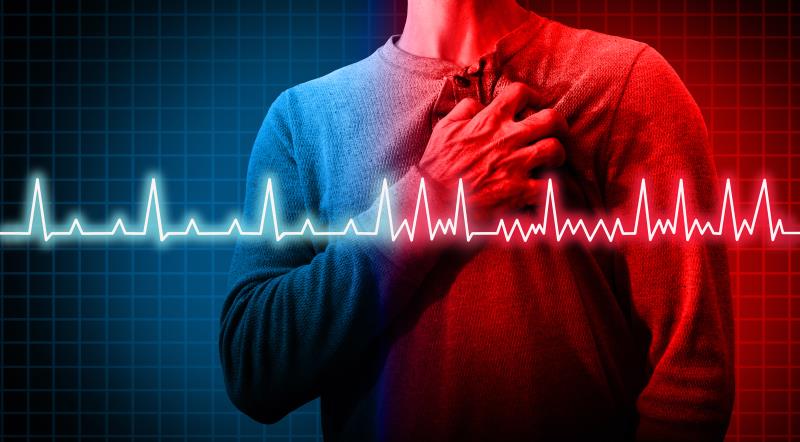
Medical cardioversion before electrical cardioversion is similarly effective to electrical cardioversion alone in converting patients with acute atrial fibrillation (AF) to normal sinus rhythm in the emergency department (ED), according to the RAFF2* study.
“Both the drug–shock and shock-only strategies were highly effective in safely and quickly returning patients to normal sinus rhythm,” said lead author Professor Ian Stiell from The Ottawa Hospital and University of Ottawa, Ottawa, Canada, and co-authors.
“These methods allow us to quickly get patients back to their normal heart rate, and send them home after 4–6 hours in the ED,” he added.
Study participants were 396 adults (mean age 60 years, 66 percent male) presenting with acute AF at 11 EDs in Canada who received one of two protocols. In protocol 1, patients were randomized to receive either intravenous procainamide (15 mg/kg over 30 minutes) followed by electrical cardioversion if needed (≤3 shocks of ≥200 J each 30 minutes after infusion in patients not converted; drug–shock; n=204) or placebo infusion followed by electrical cardioversion (shock only; n=192). Protocol 2 was for patients receiving electrical cardioversion (n=244) who were randomized to either anteroposterior or anterolateral pad positions. Fifty-two percent of patients in the drug–shock group converted to normal sinus rhythm following medical therapy.
Conversion to normal sinus rhythm for ≥30 minutes did not differ between patients in the drug–shock or shock-only groups (96 percent vs 92 percent; absolute difference, 4 percent; p=0.07). However, after excluding patients with spontaneous conversion prior to intervention, conversion to sinus rhythm was more frequent in the drug–shock vs shock-only group (97 percent vs 92 percent; absolute difference, 5 percent; p=0.04). [Lancet 2020;395:339-349]
Individuals in the drug–shock group experienced sinus rhythm conversion a median 23 minutes following infusion onset (adjusted odds ratio for conversion, 2.16), and median number of shocks in each group was 1.
The proportion of patients discharged home was high and also comparable between groups (97 percent vs 95 percent of the drug–shock and shock-only groups, respectively; p=0.60).
Pad position did not affect likelihood of conversion to normal sinus rhythm among electrical cardioversion recipients (94 percent vs 92 percent for anterolateral and anteroposterior pad positions, respectively; relative difference, 1.01; p=0.68).
Nine percent of patients who underwent electrical cardioversion experienced adverse events (AEs; six and 17 patients in the drug–shock and shock-only groups, respectively). AEs during or post-infusion were more common in the drug–shock group (26 percent vs 3 percent). There were no deaths in the ED or subsequent strokes in either group.
Subgroup analysis of the drug–shock group suggested a higher likelihood of conversion to sinus rhythm in patients with a first episode of AF compared with those with previous episodes (p=0.02), and among those aged <70 years vs ≥70 years (p=0.01).
Fourteen days after ED presentation, there were no incidents of stroke and the one death that occurred was unrelated to AF. Within the 14 days, 95 percent of patients (of 306) were in sinus rhythm, 11 percent had recurrent AF, 3 percent underwent cardioversion, and 2 percent required hospitalization.
Despite the comparable safety between both measures, the researchers were in favour of the drug–shock strategy to avoid the sedation that is required for electrical cardioversion.
“[Nonetheless,] the treatment choice is ultimately a shared decision between the patient and physician,” said co-author Professor Jeffrey Perry from the same institutions.
“Our study showed that cardioversion in the ED is safe and effective. We hope our results convince more physicians around the world to adopt these methods,” noted Stiell.